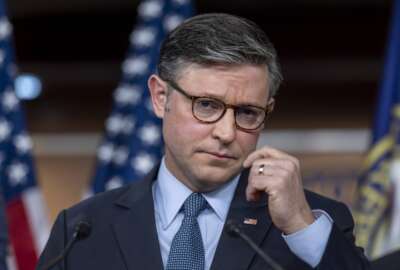Obama launches reshaping, shrinking of US military
Obama, flanked by Defense Secretary Leon Panetta and Chairman of the Joint Chiefs of Staff Gen. Martin Dempsey, unveiled the results of an eight-month defense...
By ROBERT BURNS
AP National Security Writer
WASHINGTON (AP) – Looking beyond the wars he inherited, President Barack Obama on Thursday launched a reshaping and shrinking of the military. He vowed to preserve U.S. pre-eminence even as the Army and Marine Corps shed troops and the administration considers reducing its arsenal of nuclear weapons.
Obama, flanked by Defense Secretary Leon Panetta and Chairman of the Joint Chiefs of Staff Gen. Martin Dempsey, unveiled the results of an eight-month defense strategy review that is intended to guide decisions on cutting hundreds of billions from planned Pentagon spending over the coming decade.
The eight-page document contained no details about how broad concepts for reshaping the military — such as focusing more on Asia and less on Europe — will translate into troop or weapons cuts.
|
LISTEN TO THE BRIEFING President Barack Obama Defense Secretary Leon Panetta Joint Chiefs of Staff Chairman Gen. Martin Dempsey Question and answer session with reporters |
Those details will be included in the 2013 defense budget to be submitted to Congress next month.
Both Panetta and Dempsey said they anticipate heavy criticism of their new strategy, which was begun last spring by then-Defense Secretary Robert Gates after Obama called for defense spending cuts. The Pentagon now faces at least $487 billion in cuts in planned defense spending over 10 years.
The criticism from Republicans came quickly.
Rep. Howard "Buck" McKeon, R-Calif., chairman of the House Armed Services Committee, issued a statement saying, "This is a lead-from-behind strategy for a left-behind America." He called it a "retreat from the world in the guise of a new strategy."
Panetta said that smaller military budgets will mean some trade-offs and that the U.S. will take on "some level of additional but acceptable risk." But in a changing world the Pentagon would have been forced to make a strategy shift anyway, he said. The money crisis merely forced the government’s hand.
Obama wants the new strategy to represent a pivotal point in his stewardship of defense policy, which has been burdened by two expensive wars begun under President George W. Bush. The drag those conflicts placed on military resources has deferred other priorities.
Obama said his administration would not repeat the mistakes made after World War II and Vietnam when defense reductions left the military ill-prepared.
"As commander in chief, I will not let that happen again," he said. "Not on my watch."
Obama’s involvement in the defense review and his decision to personally announce it at the Pentagon underscore that he is not just a commander in chief coping with a slimmer military in debt-ridden times. He is also an incumbent president seeking a second term and wanting to show who’s in charge.
Dempsey praised the military strategy and the work of crafting it, calling it inclusive and comprehensive.
"It’s not perfect," the general said. "There will be people who think it goes too far. Others will say it doesn’t go nearly far enough. That probably makes it about right. It gives us what we need."
Obama said the military will be reshaped between now and 2020 with an emphasis on countering terrorism, maintaining a nuclear deterrent, protecting the U.S. homeland and "deterring and defeating aggression by any potential adversary."
Those are not new military missions, and Obama announced no new capabilities or defense initiatives. He described a U.S. force that will retain much of its recent focus, with the exception of fighting a large-scale, prolonged conflict like the recently ended Iraq mission or the ongoing war in Afghanistan.
"U.S. forces will no longer be sized to conduct large-scale, prolonged stability operations," the strategy document said, referring to Iraq and Afghanistan.
Left unsaid: The military was not sized for those unexpectedly long wars when they began. The Army had to be expanded by tens of thousands of soldiers and the Marine Corps also grew. The military at the time of the Sept. 11, 2001, terrorist attacks was being shaped in somewhat the same form as Obama’s vision for 2020: agile, flexible, reliant on high-tech weaponry and dependent on allies.
The new strategy moves the U.S. further from its longstanding goal of being able to successfully fight two major regional wars at the same time.
It said the U.S. will maintain a robust nuclear arsenal but hinted at reductions.
"It is possible that our deterrence goals can be achieved with a smaller nuclear force, which would reduce the number of nuclear weapons in our inventory as well as their role in U.S. national security strategy," the strategy said.
The new strategy strongly suggests a reduced U.S. military presence in Europe, notwithstanding a continuing close relationship with NATO, and says Asia will be a bigger priority. It also emphasizes improving U.S. capabilities in the areas of cyberwarfare, missile defense, intelligence, surveillance and reconnaissance.
NATO Secretary-General Anders Fogh Rasmussen praised the U.S. strategy, calling it consistent with the alliance’s vision for collective defense.
RELATED LINKS
___
Associated Press writers Ben Feller and Pauline Jelinek in Washington contributed to this report.
_ Robert Burns can be reached on Twitter at http://twitter.com/robertburnsAP
(Copyright 2012 The Associated Press. All rights reserved. This material may not be published, broadcast, rewritten or redistributed.)
Copyright © 2025 Federal News Network. All rights reserved. This website is not intended for users located within the European Economic Area.





